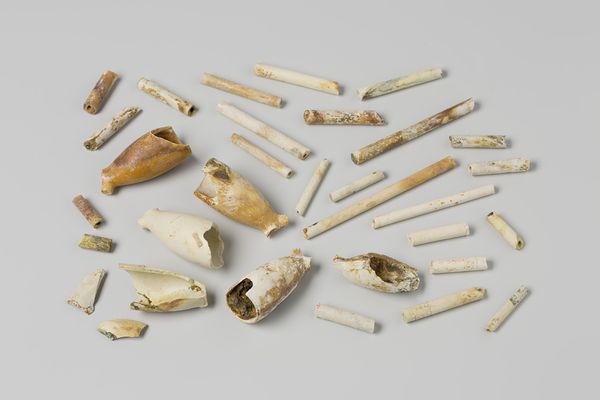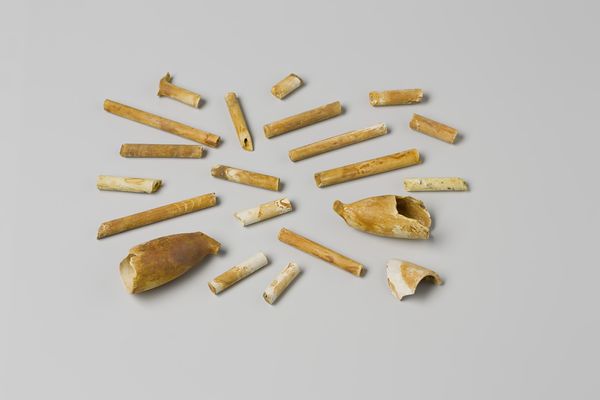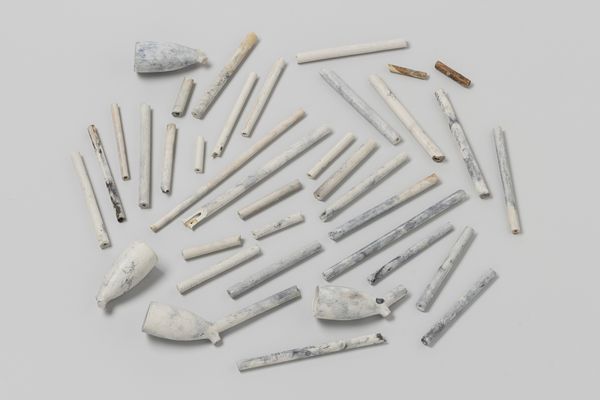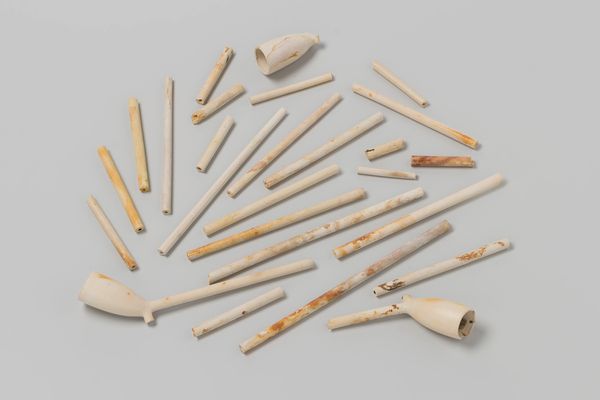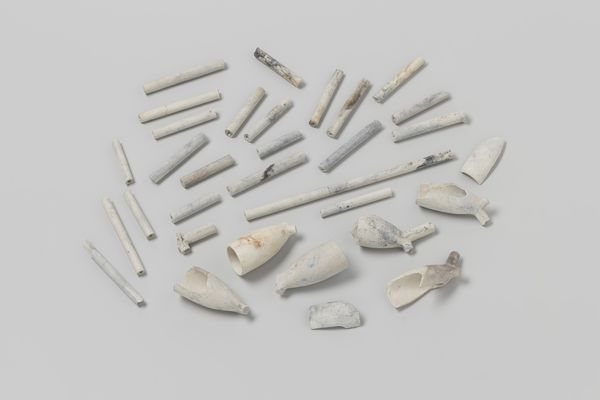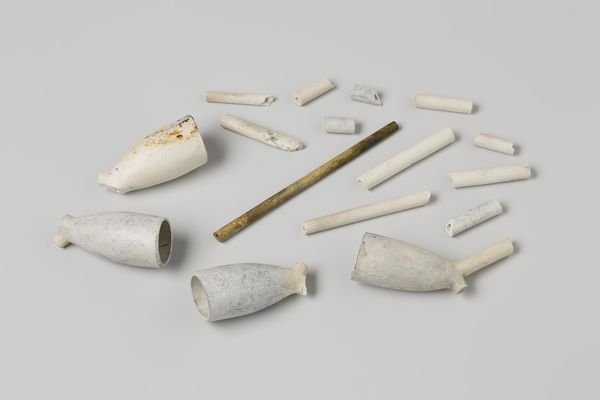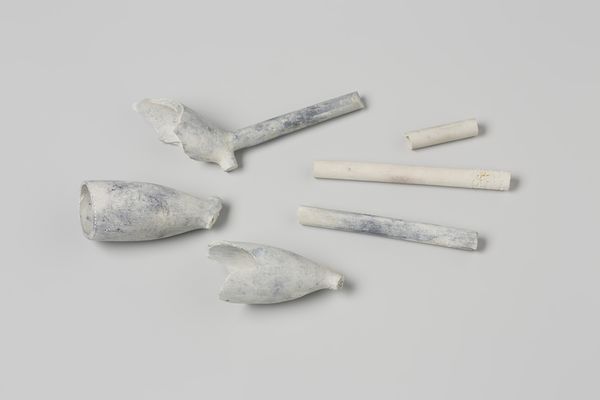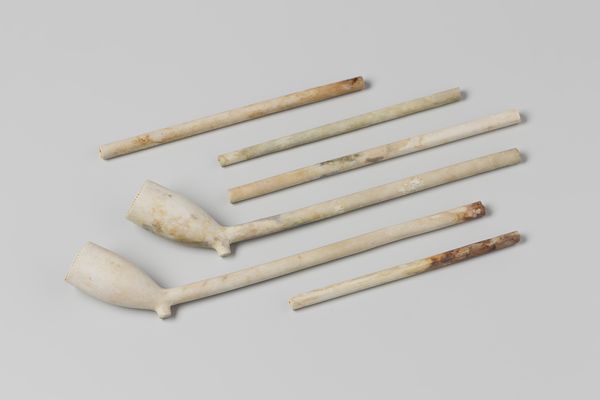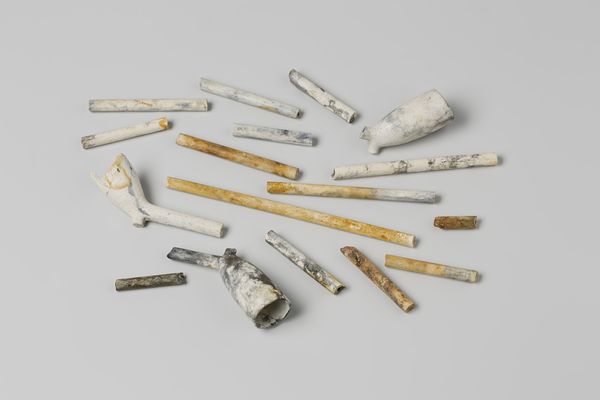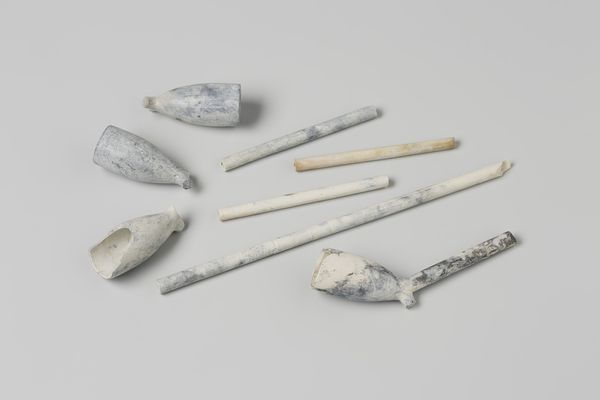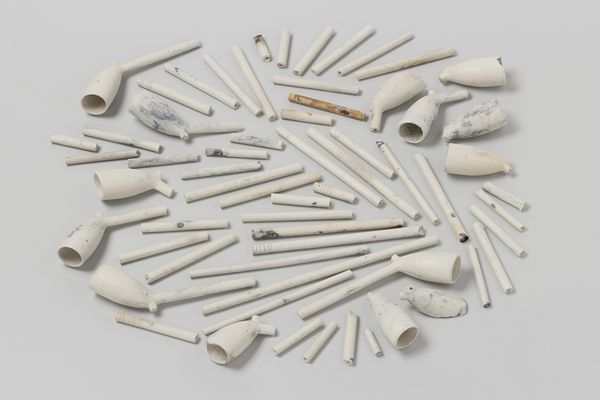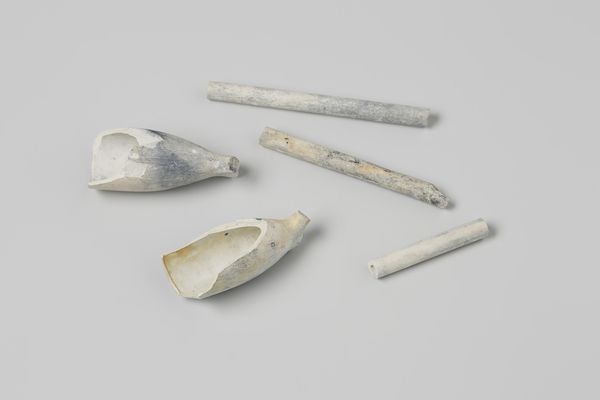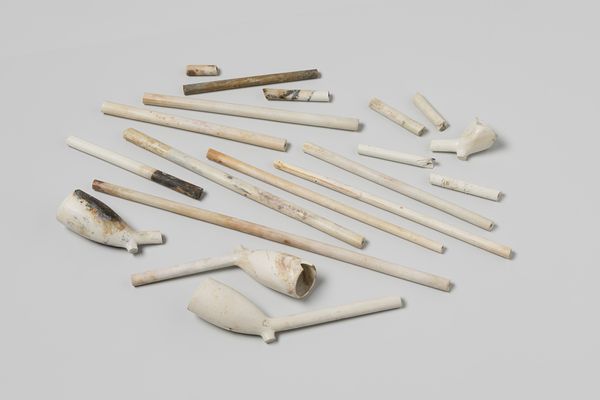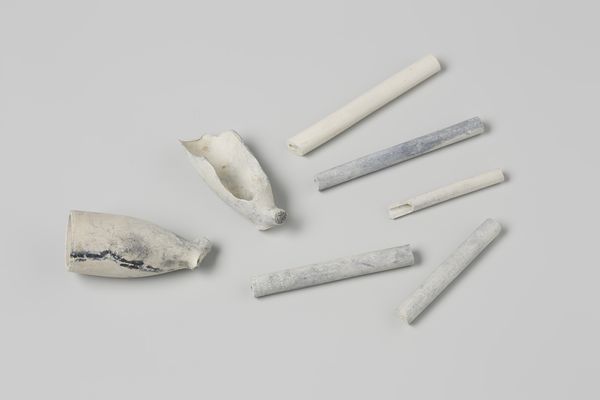
Pijp en fragmenten pijpenstelen uit het wrak van de Oost-Indiëvaarder 't Vliegend Hart Possibly 1700 - 1735
0:00
0:00
ceramic, found-object, earthenware
#
pottery
#
dutch-golden-age
#
ceramic
#
found-object
#
earthenware
#
stoneware
#
ceramic
Dimensions: length 16.8 cm, width 2 cm, depth 4 cm, length 2 cm, diameter 0.5 cm
Copyright: Rijks Museum: Open Domain
These clay pipes and fragments come from the wreckage of the Dutch East India ship, 't Vliegend Hart. These fragments are a fascinating material record of the global trade networks of the 18th century. The Dutch East India Company was a major player in this system, and its ships transported goods, people, and cultural practices across vast distances. Smoking tobacco was one such practice, and pipes like these were a common item on board ships. Consider the social context of tobacco use at this time. It was both a recreational activity and a symbol of status and wealth, linked to the colonial project. The pipes themselves were often produced in Europe, but the tobacco they carried came from the Americas, highlighting the complex relationships between different parts of the world. Historical documents, such as ships' manifests and company records, can tell us more about the lives of the people who used these objects and the role they played in shaping global trade.
Comments
No comments
Be the first to comment and join the conversation on the ultimate creative platform.
